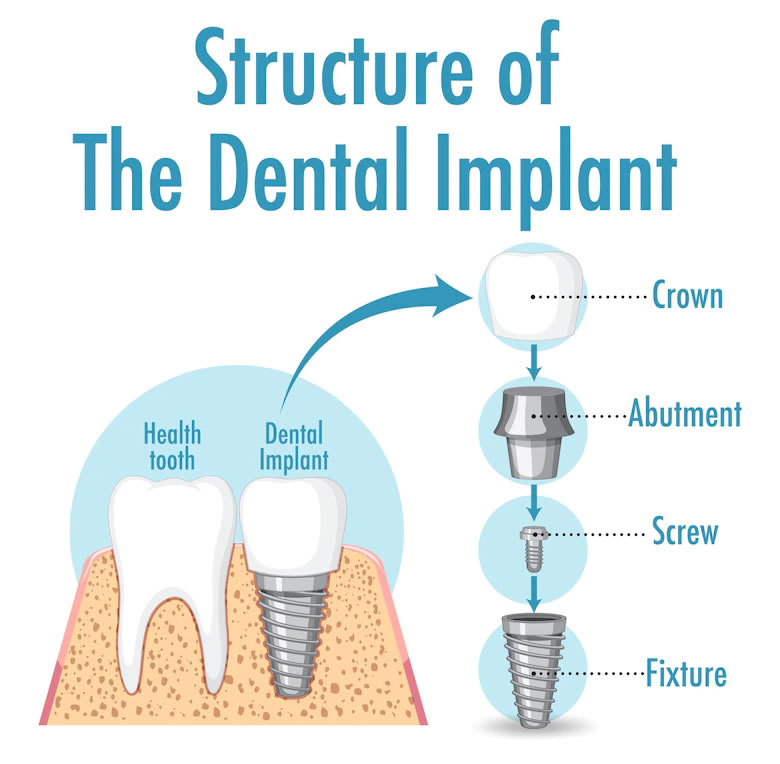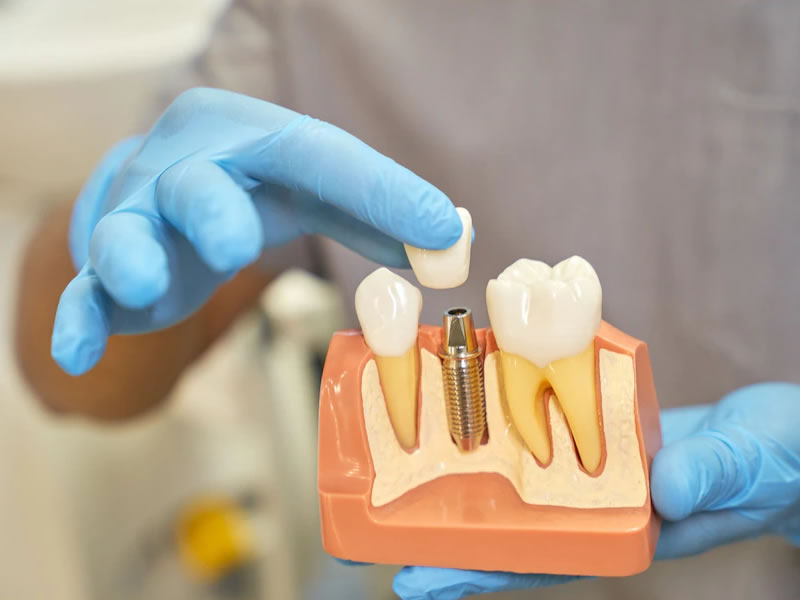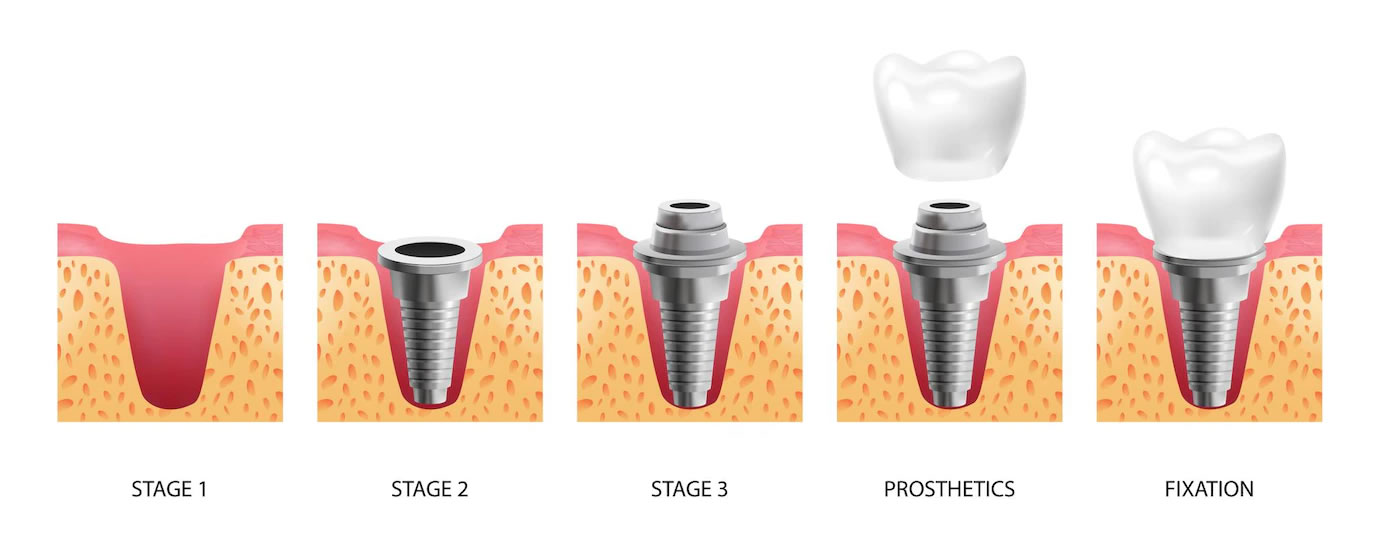Implant Dentistry: Use, Procedure
A dental implant is a form of cosmetic dentistry used to replace missing teeth for a look and feel that is natural. They are surgically placed below the gums over a series of appointments. The procedure involves attaching the implants to the jawbone and gum tissue to become a stable base for one or more custom artificial replacement teeth, called dental crowns. Candidates for dental implants need to have healthy gums and adequate bone to support a secure implant. Consult with your dentist to see if you are eligible for dental implants.
Dental implants are frequently the best treatment option for replacing missing teeth because unlike dentures that rest on the gumline or the use of adjacent teeth as anchors, dental implants are long-term replacements that your cosmetic dentist or oral and maxillofacial surgeon surgically places in the jawbone.
Tooth Loss
Tooth loss can be an embarrassing condition that most adults ages 20 and older have had to deal with. Most people in this age bracket have lost at least one permanent tooth to an accident, gum disease, a failed root canal, tooth decay, excessive wear and tear, or congenital defects. Regardless of the reasons related to tooth loss, dental implants may provide a smile remedy with proven results.




